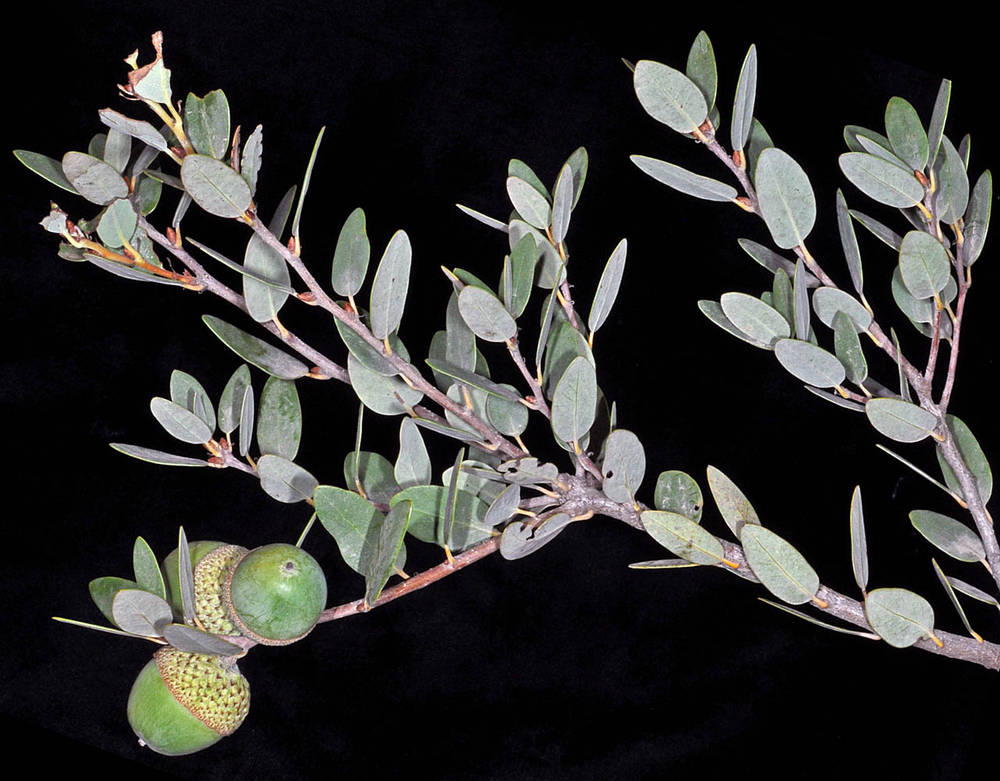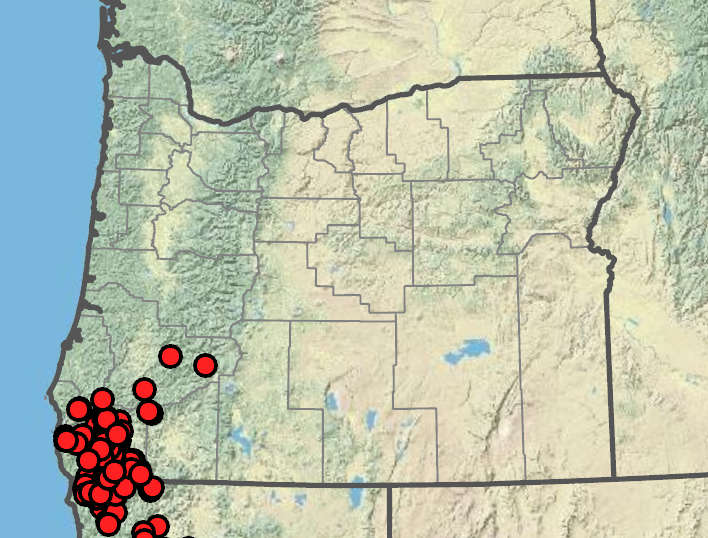Quercus vacciniifolia
Quercus acerifolia
huckleberry oak
ovoid, red-brown;
tips rounded, glabrous or puberulent; terminal buds 2–2.5 mm.
oblong to oblong-ovate or elliptic, 1.9–3.6 × 0.7–1.9 cm, bases rounded to truncate;
margins entire or rarely spinetoothed, unlobed;
secondary veins 6–8 on each side;
tips acute or obtuse, sometimes rounded or apiculate;
surfaces abaxially glaucous, glabrous, rarely with scattered, appressed, yellow hairs, adaxially glabrous or with appressed, yellow hairs;
petioles 2–5 mm.
ripening 2nd year; nuts ovoid to ellipsoidal, 11–22 × 9–14 mm;
tips acute to rounded; cups shallowly bowl-shaped; thin, 5–10 × 10–19 mm, covering only base of nuts;
scales plane, appressed, attachment scars 2–4 mm wide.
Quercus vacciniifolia
Quercus acerifolia
Rocky places in chaparral or open woodlands. Flowering May–Jul. 300–1600 m. Casc, CR, Sisk. CA, NV. Native.
Huckleberry oak is closely related to Q. chrysolepis, and shrubby forms of the latter species can sometimes cause confusion. The habit of the shrub is different; Q. vacciniifolia tends to form low shrubs around rock outcrops in the mountains, usually with a dense crown having many crowded, parallel, slender, pliable stems. Quercus chrysolepis has a more open crown, and the branches are stiffer, more divergent, and not so much branched. These characters show some variation, and the two species may be difficult to distinguish from isolated twigs in the herbarium. Hybrids are sometimes found where they grow together, usually around 1000 m elevation. The name was originally spelled “Quercus vaccinifolia,” but a recent change in the International Code of Botanical Nomenclature (Art. 60.8, Vienna code) requires the addition of a second “i.”
Alan Whittemore



